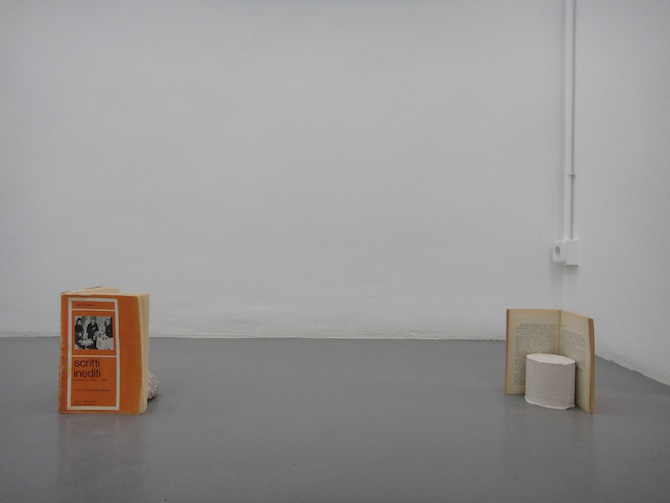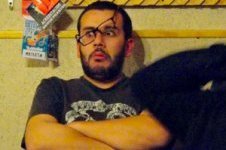Search
To search for an exact match, type the word or phrase you want in quotation marks.
A*DESK has been offering since 2002 contents about criticism and contemporary art. A*DESK has become consolidated thanks to all those who have believed in the project, all those who have followed us, debating, participating and collaborating. Many people have collaborated with A*DESK, and continue to do so. Their efforts, knowledge and belief in the project are what make it grow internationally. At A*DESK we have also generated work for over one hundred professionals in culture, from small collaborations with reviews and classes, to more prolonged and intense collaborations.
At A*DESK we believe in the need for free and universal access to culture and knowledge. We want to carry on being independent, remaining open to more ideas and opinions. If you believe in A*DESK, we need your backing to be able to continue. You can now participate in the project by supporting it. You can choose how much you want to contribute to the project.
You can decide how much you want to bring to the project.

The basement of an old house in Buenos Aires conceals a small wonder: the only place on earth where all places are, seen from every angle, each standing clear, without any confusion. This is how Juan Canela, quoting Borges, begins the discourse that led to “El espacio cósmico estaba ahí, en dos o tres centímetros”, (The cosmic space was there, in two or three centimetres), a group exhibition that was on show until 21 January at the recently opened Galería Bacelos in Madrid. As of 21 February, this same show, now occupies the gallery’s space in Vigo.
This project stems from the problems provoked by the geographical definition of the space we inhabit, so turning to Borges, if nothing else, provides a possible if ludicrous solution to the enigma.
Canela resorts in this curatorial project to a selection of artists that transpose the basement of the house of Beatriz Viterbo (the character in Borges’ tale) to any place, in this case, the spaces of the Galería Bacelos. Where a series of creators, recently seeming to have achieved scientific exactitude, resolve in as many ways as possible the personal geography of each one of us, of each one of them.
The discourse, enclosed in a magnificent publication that stands out for its simplicity, turns once again to the universe of Borges, quoting the very short story, “Del rigor de la ciencia”, (On exactitude in science). In which the Argentine, based on the tale of “Sylvie and Bruno Concluded” by Lewis Carroll, talks of the fever of exactitude in cartography, which taken to ludicrous extremes results in an immense map of a scale of 1:1. “It has still never been unfolded […], the farmers opposed it. They said that it would cover up the whole country, and wouldn´t let the sunlight through! So we now use the country itself as a map, and I assure you it works almost as well.“
Based on such a crazy formulation, Juan Canela choses the work of Francesco Arena, “Cucina Democristiana”, in which the Italian maps on the floor the plan of the kitchen from his family home, with the help of pieces of marble and books from his grandfather´s library. In this geography he reflects on the political memory of his own country. Lúa Coderch opts for a more evocative than documentary solution in “Red Star Revisited”, recounting the flamboyant removal of the standard that crowned the Bulgarian Communist Party’s Central Committee building until 1990; thereby formulating the duality of geography as a specific terrestrial point and as a constructed and mobile space.

Adelita Husni-Bey, along the same lines, presents the project, The Green Mountain. A place in Libya, a raised plateau used as a leisure zone, which though not currently the scenario for the actions for which history remembers it, continues to maintain its significance for the anti-colonial revolts that erupted there.
The Icelander, Berglind Jóna bases her relation with the geographical on the recent economic collapse of her country, creating a series of photographic sculptures. These wall reliefs show stacks of large blocks of granite, waiting to become luxury kitchen tops, already monuments to a failed economy.
Gerard Ortín and Mercedes Mangrané narrate in Lake Valley the history of a frustrated entrepreneurial initiative in Barcelona at the beginning of the 20th century, that consisted in exploiting a leisure zone on a mountain close to the city. And the sixth and final proposal, that of Ángel de la Rubia, that shifts to Grütas Park in Lithuania. A park, created out of a private initiative, where since the dismantling of the Iron Curtain the monuments of the Soviet era have been laid to rest.
Six highly differentiated ways of configuring the geographical space, of situating strategic points with which to talk about the past, through art. All of them concentrated in the same place that could house, as in Borges’ story, all the places in the globe, seen from every angle.
An interesting viewpoint, Juan Canela rounds out his proposal with the collaboration of the anthropologist Bibiana Martínez Álvarez. Who, based on her experiences as a child, analyses the beliefs of her village and questions the possibility of transposing them to other places where she resides, far from the geographical point of their origin.

Ángel Calvo Ulloa was born in a very small place full of vile characters. In the faculty where he studied nobody ever talked to him about criticism or curating, so now he dedicates his time to reading, writing and every now and again doing the odd exhibition. He loves travelling and feeling very small in a large city. He also loves going back home and once again hating this tiny place.
"A desk is a dangerous place from which to watch the world" (John Le Carré)